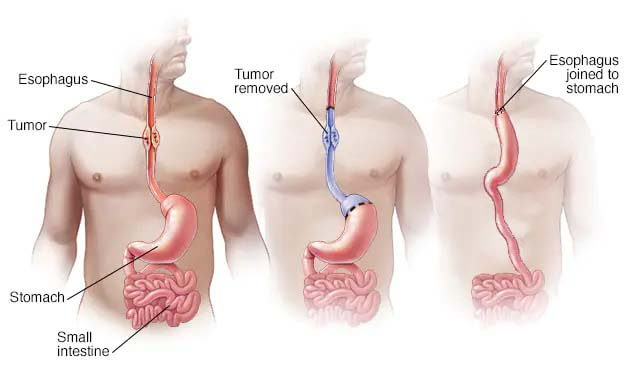Services
Laparoscopic Esophagectomy

This is a surgery where doctors remove all or part of the esophagus (the tube that carries food from the mouth to the stomach) using small cuts instead of one big one. It’s done to treat serious problems like esophageal cancer.
Indications for Surgery:
Esophageal Cancer: Mainly for people with cancer in the middle or lower part of the esophagus.
Non-Cancer Conditions: Such as:
Large pouches in the esophagus (diverticula)
Achalasia (a problem where food can’t move down properly)
Narrowing of the esophagus that doesn’t get better with other treatments
Severe Acid Reflux (GERD): In rare cases, when it leads to serious damage or precancerous changes.
Procedure:
Anesthesia: You’re asleep during the operation and don’t feel anything.
Small Cuts: The surgeon makes about 5 to 7 small cuts in your belly and sometimes chest.
Camera Inserted: A tiny camera goes in through one of the cuts to show the area on a screen.
Using Special Tools: The surgeon uses thin tools to do the surgery through the other small cuts.
Removing the Esophagus: The damaged or cancerous part of the esophagus is removed. Lymph nodes and sometimes part of the stomach may also be taken out.
Rebuilding the Food Path: The surgeon reconnects the digestive tract by pulling the stomach (or a piece of intestine) up to replace the esophagus. This allows food to still move from the mouth to the stomach.
Closing the Cuts: The small cuts are closed with stitches or glue.
Advantages of Laparoscopic Colorectal Resection:
Less Pain: Smaller cuts mean it usually hurts less afterward.
Faster Recovery: You may leave the hospital sooner and feel better quicker.
Lower Risk of Infection: Tiny cuts are less likely to get infected than a big one.

